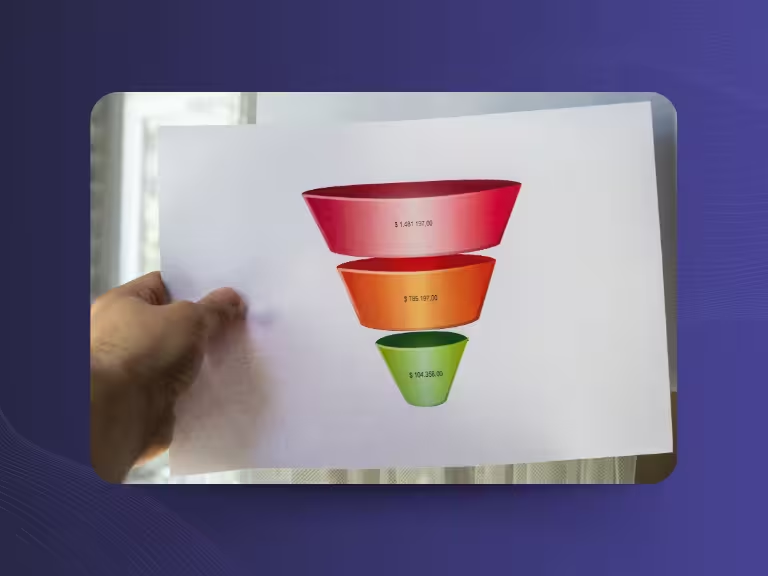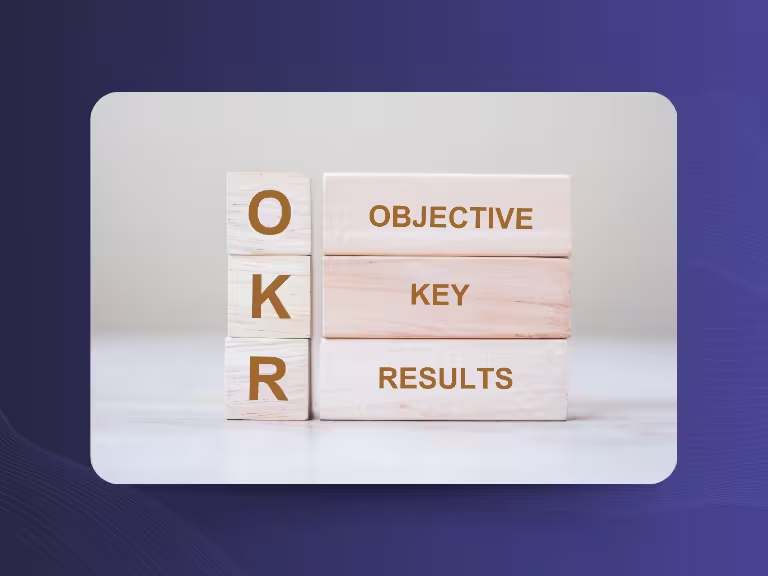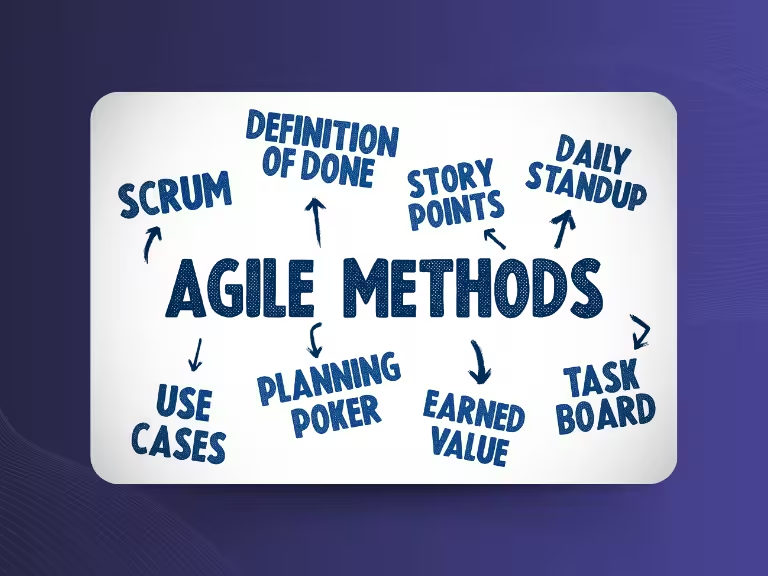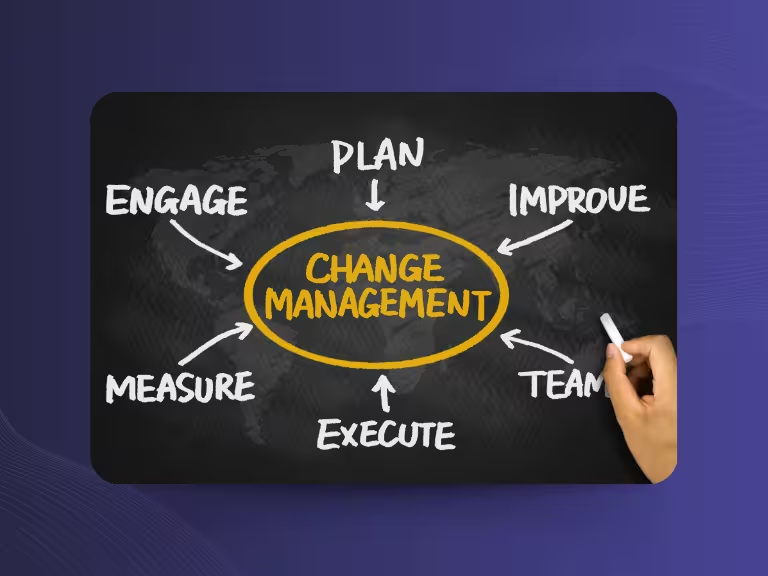Understanding and Utilizing Sales Pipeline Management
Sales pipeline management is the systematic administration and control of all potential sales opportunities from initial contact through successful closure. It's a structured method that enables sales teams to make the entire sales process transparent and guide each lead purposefully through various phases.
A well-structured pipeline forms the heart of every successful sales operation. It not only provides you with a clear overview of all ongoing sales opportunities but also enables you to identify potential bottlenecks early and respond to them strategically. Without systematic pipeline management, you quickly lose track of your prospects and miss valuable sales opportunities.
The benefits of effective pipeline management are diverse: studies show that companies with systematic pipeline management achieve up to 30% higher close rates. Additionally, it enables more precise revenue planning, more efficient resource utilization, and improved forecast accuracy. These factors are crucial for sustainable business success.
In this article, you'll learn everything important about the fundamentals of sales pipeline management, proven best practices, modern tools and technologies, advanced optimization strategies, and practical tips for teamwork and customer engagement. We'll also examine the importance of long-term analysis and data-driven decisions for your sales success.
Fundamentals of Sales Pipeline Management
What is a Sales Pipeline?
A sales pipeline is a visual representation of your entire sales process that maps all potential customers and their current status in the buying cycle. It functions like a funnel through which potential customers pass through various stages until they ideally become paying customers.
Typical pipeline stages include first lead generation, where potential customers are identified and initial contacts are made. This is followed by lead qualification, where the seriousness of purchase interest and fit are evaluated. In the proposal phase, concrete solutions are presented and prices are discussed. The negotiation phase involves fine-tuning conditions before finally reaching closure.
Transparency in every phase is crucial for your pipeline's success. Only when you know exactly where each potential customer stands, what steps are required next, and what hurdles must be overcome can you act strategically and maximize your sales opportunities.
Importance for Sales Success
The impact of a well-managed pipeline on close rates and revenue planning is significant. Companies with systematic pipeline management report significantly improved forecasts and up to 20% higher sales efficiency. These numbers underscore the practical relevance of a structured approach.
Systematic pipeline monitoring offers several crucial advantages: you identify bottlenecks early before they become major problems. At the same time, you use your sales resources more efficiently because you know where investment pays off most. Forecast accuracy improves significantly, which in turn enables better business management.
Structured pipeline management also helps you set realistic goals and make progress measurable. Instead of relying on luck, your decisions are based on concrete data and traceable developments.

Best Practices in Sales Pipeline Management
Pipeline Hygiene: Quality Over Quantity
One of the most important ground rules in pipeline management is regular pipeline cleansing. This means consistently removing or realistically assessing inactive and unpromising leads. An overloaded pipeline with many unrealistic opportunities leads to false forecasts and diverts attention from truly promising prospects.
Prioritization by close probability is another success-critical factor. Not all leads are equally valuable, and systematic evaluation helps you focus your time and energy on prospects that offer the highest probability of success.
Consistent follow-up and tracking processes are the backbone of a functioning pipeline. Studies show that many sales opportunities are lost because contact isn't maintained regularly. A structured follow-up system ensures that no potential customer "falls through the cracks."
Structured Maintenance and Forecast Meetings
Regular updates and meetings to discuss the pipeline are indispensable for effective sales pipeline optimization. These meetings should not only serve reporting purposes but actively contribute to problem-solving and strategy development.
Transparent team communication significantly improves data quality. When all participants understand how important accurate data is and how it contributes to overall performance, motivation for careful pipeline maintenance increases.
Using graphical pipeline visualization makes complex sales processes understandable at a glance. Dashboards and visual overviews enable you to quickly recognize where action is needed and which areas are performing particularly well.
Fostering Collaboration in the Sales Team
The use of collaborative tools and CRM integration revolutionizes teamwork in sales. Platforms like Slack or Microsoft Teams, directly connected to your CRM system, enable seamless information exchange and ensure all team members stay up-to-date.
Team reviews for joint analysis and optimization create a culture of continuous learning. When successful strategies and insights are shared, the entire team benefits from individual members' experiences.
Clear responsibilities in pipeline management prevent important tasks from being overlooked. Everyone on the team should know who is responsible for which leads and what steps are required next.
Digital Tools and New Technologies for Pipeline Management
CRM Systems and Pipeline Visualization
Leading CRM pipeline tools like Salesforce, HubSpot, and Pipedrive have fundamentally changed how sales teams manage their pipelines. These systems offer far more than just contact management – they enable comprehensive lead tracking, automatic updates, and meaningful dashboard overviews.
Modern CRM systems' functions include automated workflows, intelligent lead scoring mechanisms, and detailed reporting capabilities. These tools make it possible to document and track every step in the sales process.
Visual pipeline representation is one of the greatest advantages of digital tools. Instead of struggling through endless spreadsheets, you see at a glance where your sales opportunities stand and what actions are required. This transparency enables quick and informed decisions.
Automation and AI-Powered Analytics
Automation of routine tasks is a game-changer for sales efficiency. Follow-up emails, appointment scheduling, and reminders can now be handled completely automatically, giving your team more time for truly important tasks – building customer relationships and closing deals.
AI-powered forecasts and lead prioritization take pipeline management to a new level. These systems analyze historical data, customer behavior, and market trends to predict which leads are most likely to result in closures.
Studies show impressive results: companies using predictive analytics in their sales automation report 15% better forecasts and 20% higher overall sales efficiency. These numbers underscore the potential of modern technologies.
Practical Tip: Automated Meeting Documentation with Sally
A practical example of pipeline management optimization is Sally, a GDPR-compliant AI meeting assistant. Sally automatically joins your sales conversations, records them, creates transcripts, and summarizes key points.
For sales teams, this means enormous added value: instead of laboriously transferring notes after each customer conversation, all important information is automatically fed into your CRM system. Integration with over 8,000 platforms, including leading CRM and project management tools, makes Sally a valuable component in pipeline management.
Improving pipeline documentation through automated protocols ensures seamless tracking of all customer interactions. This leads to better team collaboration and ensures no important details are lost.

Advanced Strategies for Pipeline Management Optimization
Customer Engagement During the Sales Process
Integrating customer feedback into your pipeline management is an often-overlooked but very effective approach. Online portals and structured feedback loops enable your potential customers to provide direct input and express their needs.
Customer-oriented pipeline adaptation based on this input makes your sales process not only more effective but also more customer-friendly. When you understand how your customers experience the buying process, you can make targeted improvements.
The great advantage lies in early identification of hurdles and the possibility of individual care. Instead of waiting until a customer drops out, you can proactively address their concerns and offer tailored solutions.
Long-term Analysis and Data-Driven Decisions
Using big data and analytics for pattern recognition opens completely new possibilities in pipeline management. By analyzing large amounts of data, you can identify trends that wouldn't be visible to the naked eye.
Monitoring bottleneck phases and identifying profitable customer segments helps you optimally distribute your resources. When you know in which pipeline stages most prospects are lost, you can take targeted countermeasures.
Building predictive analytics for future forecasts is the next step in pipeline management evolution. These systems can not only predict which deals are likely to be successful but also suggest optimal timing for specific activities.
Training and Resources for Sales Teams
Continuous training and e-learning offerings are indispensable in the rapidly evolving sales landscape. The best tools are of little use if your team doesn't know how to use them optimally.
Improving soft skills and tool competencies in sales should go hand in hand. While technical abilities are important, interpersonal skills remain the key to sales success.
Certified courses and practical workshops offer structured learning opportunities that can be directly integrated into daily work. Investments in your team's continuing education pay off through higher close rates and improved customer satisfaction.
Conclusion: Successful Sales Pipeline Management as the Key to Sustainable Sales Success
Successful sales pipeline management is based on five central pillars: transparency in all processes, quality over quantity in lead management, intelligent use of modern technologies, effective team collaboration, and consistent customer focus. These elements interconnect and mutually reinforce each other.
The benefit for your company is measurable and sustainable: higher close rates through focused processing of promising leads, better predictability through precise forecasts, and more efficient resource use through data-driven decisions. These advantages directly lead to improved business results.
Now is the ideal time to analyze your pipeline, implement modern tools, and train your team. Start with an honest assessment of your current processes, identify the greatest improvement potentials, and develop a structured plan for optimizing your pipeline management.
Tools like Sally can help your sales team automate processes and keep the pipeline constantly up-to-date. Through automatic documentation of customer conversations and seamless integration into existing systems, pipeline maintenance becomes significantly more efficient and reliable. The path to optimized sales pipeline management begins with the first step – and this should be taken today.

Test Meeting Transcription now!
We'll help you set everything up - just contact us via the form.
Test NowOr: Arrange a Demo Appointment





